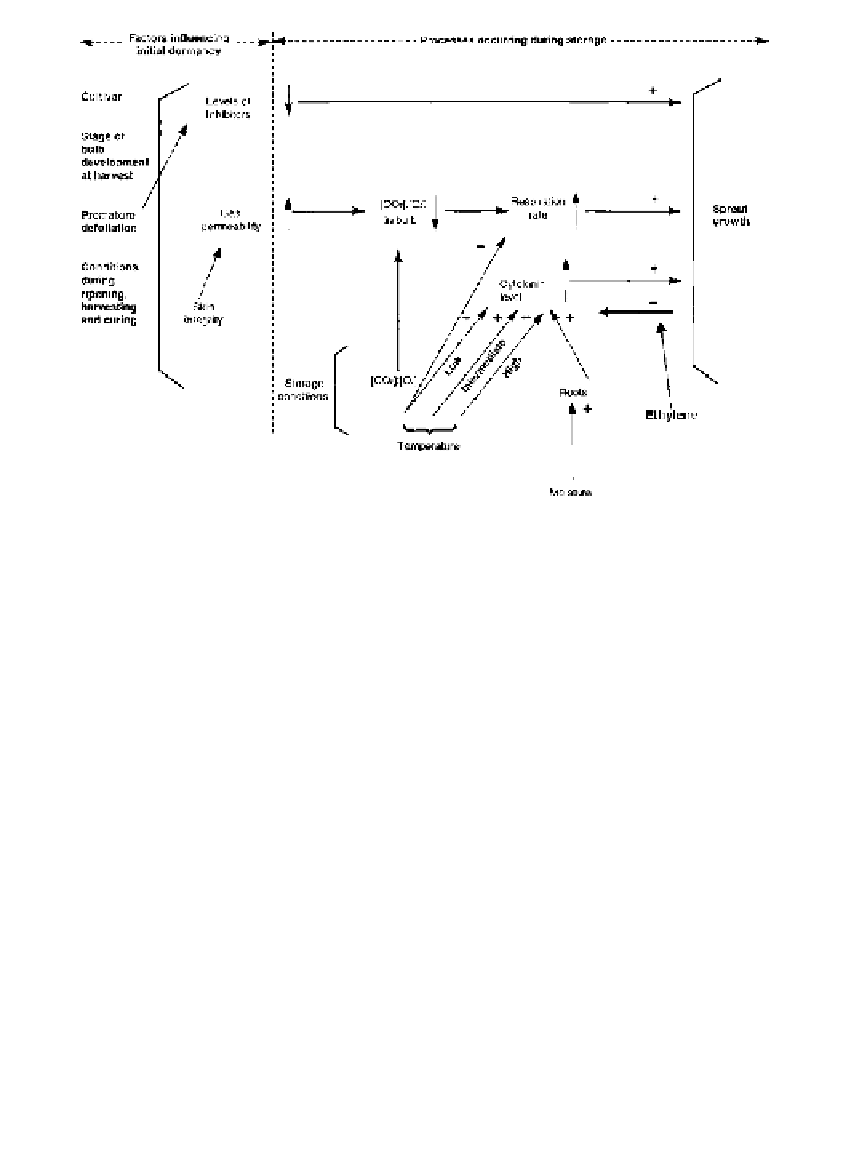Agriculture Reference
In-Depth Information
Fig. 7.11.
Summary of the main factors influencing the rate of sprouting in stored
onion bulbs.
a decrease in the level of a factor; + a
promoting effect and - a retarding effect of the conditions indicated on a process or
the level of a factor.
↑
indicates an increase,
↓
have been reported. Storage of bulbs at warm temperatures (25-30°C) prevents
the rise in cytokinin activity that occurs in bulbs stored at cooler temperatures.
Furthermore, sprouting can be stimulated in warm-stored bulbs by injecting
them with cytokinins (Miedema, 1994b). These results indicate that inhibition
of sprouting by high-temperature storage is due to a low level of endogenous
cytokinins. As described previously, the promoting effect of roots on sprouting
seems to be due to cytokinin production by the roots.
Summary
The internal control of sprouting remains uncertain. It has been debated
whether the onion bulb is ever truly dormant except immediately around
harvest time (leaf collapse), when sprout leaf elongation ceases in some cvs
(Bufler, 2001) and mitosis ceases (see Fig. 7.2), since mitosis resumes a few
weeks after harvest. Carbohydrate metabolism does not appear to be the factor
limiting sprout growth inside bulbs since levels of sucrose, sucrose synthase
and fructans at the shoot apex are high throughout storage, but sprouts do not
show the growth that this could support (Pak
et al.
, 1995).
It has long been known that wounding bulbs accelerates sprouting
(Boswell, 1924). One reason for this may be the release of growth-promoting
substances upon wounding, the so-called wound hormones. However, change

